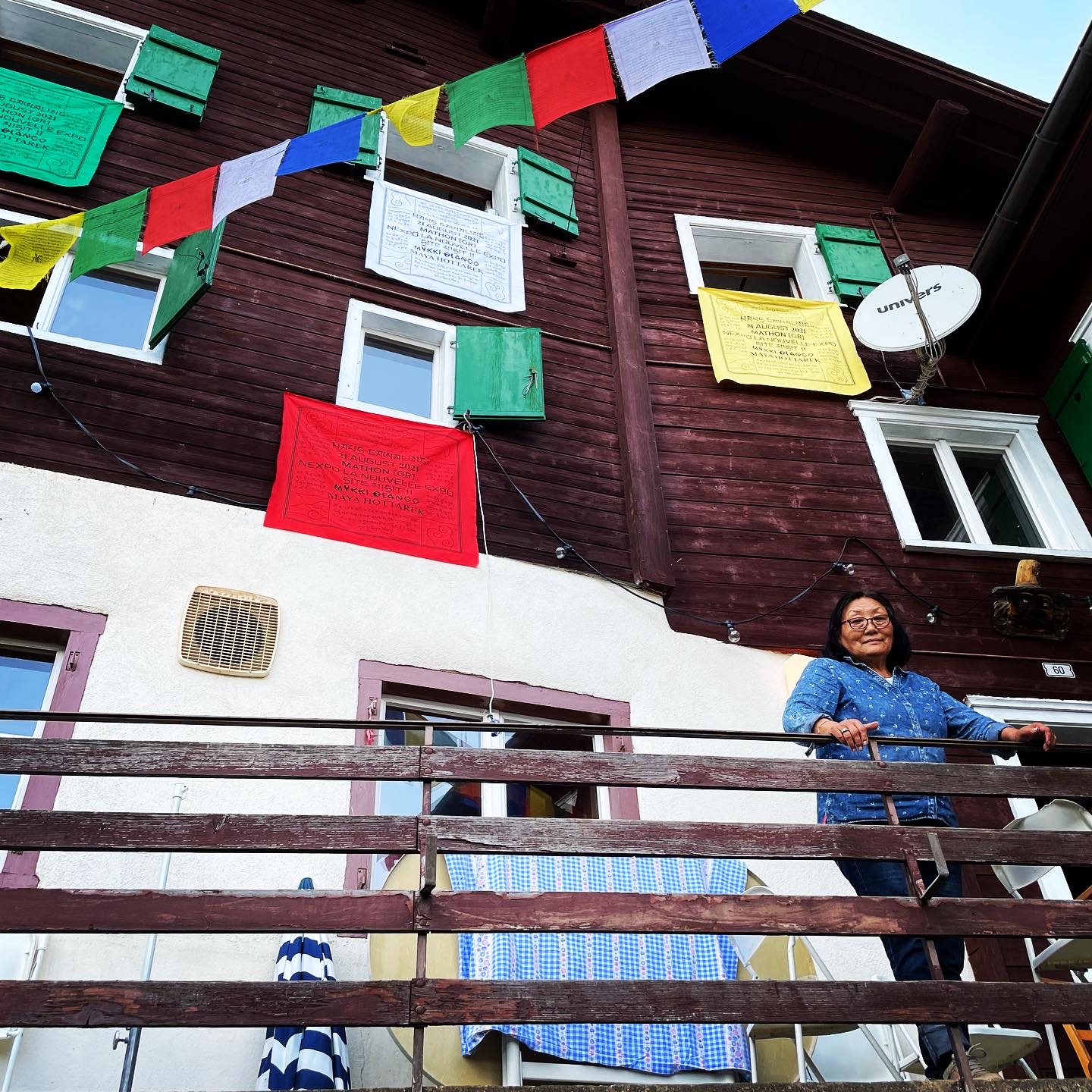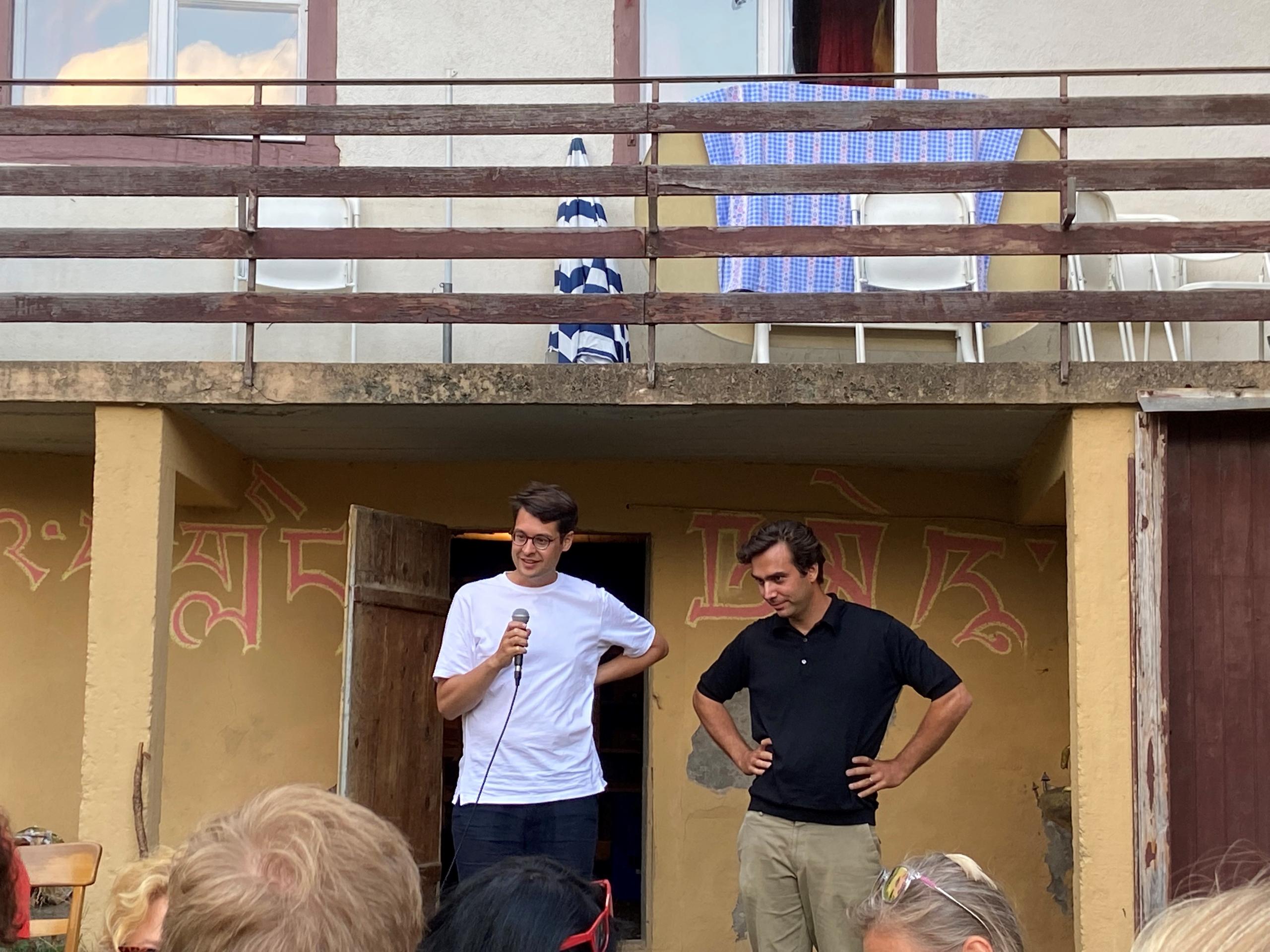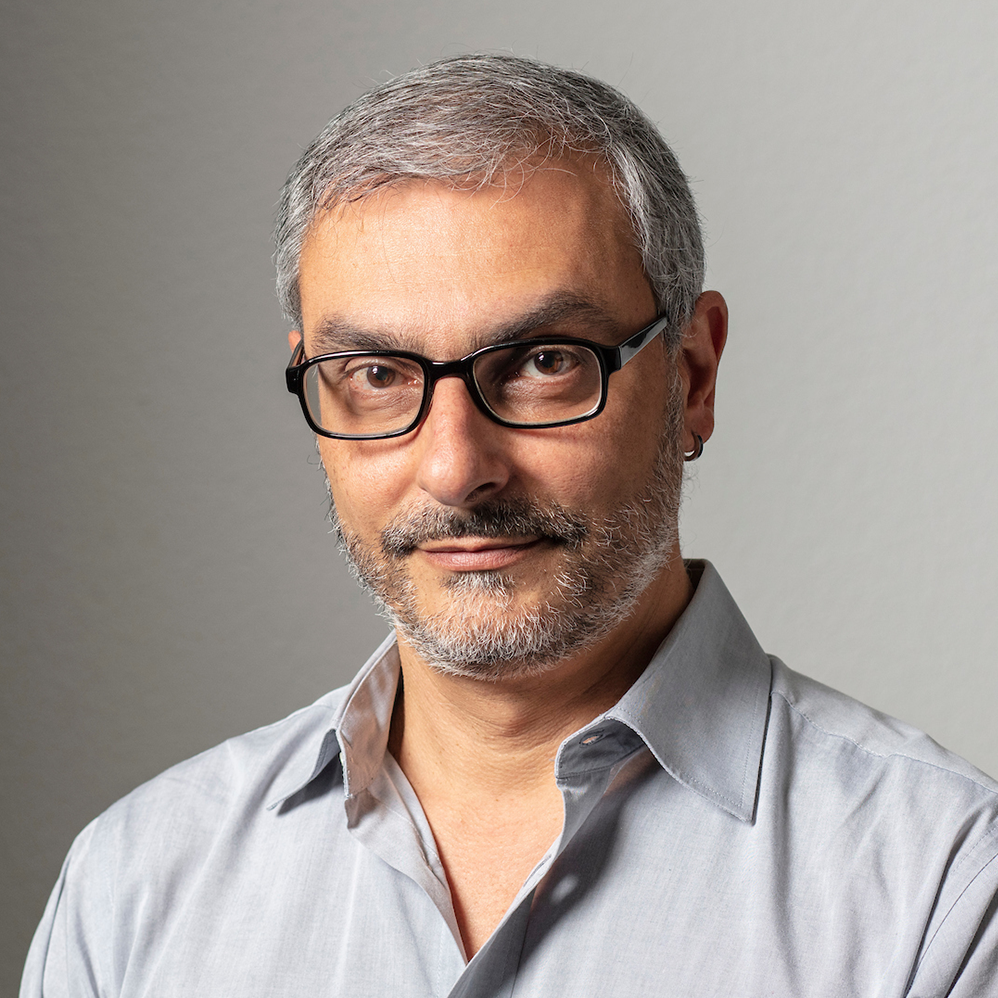The next EXPO wants to scale down Swiss megalomania

Twenty years ago, Switzerland exposed itself as a rich, spectacular, monumental place embracing the digital future with an acritical open mind with its Expo 02. Nexpo, the next Swiss national exhibition slated to open in 2028, faces a completely different reality.
Even if there’s still seven years to go until the official opening of Nexpo, the next Swiss national exhibition, preparations are well under way.
Haus Gawaling, a Tibetan house in the tiny Alpine village of Mathon in canton Graubünden (population of 50), hosted one of the kick-off events. A group of about 50 invitees, mainly artists, curators, and architects, followed Nexpo’s organizers in a short trek across the mountains. The day ended with a Tibetan dinner and an impromptu show by the Afro-American queer poet and singer Mykki BlancoExternal link.
This global and almost utopian microcosm is intended to reflect the big project. The young artistic directors, Fredi Fischli and Niels Olsen, have set a series of “exploration trips” around the country, in search of “landmarks of tomorrow’s Switzerland, both existing and new”.
These landmarks may be part of the main exhibition in 2028, that will be spread all over the country. Central to the new concept is the role of cities. The mayors of the 10 biggest Swiss cities – Basel, Bern, Biel, Geneva, Lausanne, Lugano, Lucerne, St. Gallen. Winterthur, and Zurich – came up with the initiative during an informal meeting in 2016.
This rather decentralized structure is supposed to permeate the entire process and the final exhibition itself, a total inversion of the idea exposed in 2002. Some smaller towns, such as Chur, Neuchâtel, and Aarau have already joined the project, too.
Turning the page?
Expos, as these national exhibitions with universal aims in scope are called, are an invention of the 19th century – although the first one on record, Prague’s World Fair, took place as early as 1791. They serve as a display of the (national) achievements and (global) aspirations of a determined country in a particular time.
Switzerland holds in average one Expo every 25 years since the first edition in 1883, in Zurich, centered on the importance of education for economic growth.
This progressive outlook was however put aside in the subsequent exhibitions (Geneva 1896; Bern 1914; Zurich 1939), which were dominated by the military. The times then demanded a certain projection of self-reliance in defense issues, but in the first post-War Expo, in Lausanne (1964), Switzerland attempted a futuristic image of itself, displaying a computerized survey of its society, highlighting whatever was then deemed as “Swiss values”. The results of the Gulliver project, as the experiment was called, were not as expected and part of it was duly censored.

Expo 02 was probably the most criticized Expo to date. It projected an idea of Switzerland devised in the 1990s that was already outdated by the time it opened. Recent events like 9/11 and the War on Terror changed the whole global perspective. Internally, the Alpine nation was shaken by myriad national scandals such as the Swissair grounding, and the disclosure of Swiss ties with Nazi Germany at the same time as Swiss banks had to finally deal with the issue of the Holocaust “heirless accounts”.
Projections of megalomaniac digital-architectural utopias didn’t fit in a moment of national soul-searching and a hard reckoning with the country’s recent past, as ideas of “Swiss values” and the official narratives were being challenged and debunked by facts in an almost daily basis.
Down to earth
In comparison to the former edition, Nexpo’s ambitions sound more in tune with the current mood. Its basic concept, though, was devised by the same team that made Expo 02, led by the art historian Juri Steiner. “But to implement this concept, we had to pass it to a younger generation”, said the artist Johannes GessExternal link, a member of that conceptual team who was also present in the Site Visit of Mathon.
At 35, Fischli and OlsenExternal link bring along their experience in exhibitions and research, comprehending arts, science, and architecture, developed within the Swiss Institute of Technology (ETH Zurich). Their vision of the cities, though, is not circumscribed to the ideas that turned thinkers such as the Dutch-American Saskia SassenExternal link or the Spaniard Manuel CastellsExternal link into intellectual celebrities 20 years ago, pointing to migration and the rise of a network of cities, instead of national states, as the main drives of globalization.
“We don’t look at the cities as a place of success”, says Fischli. “Most of these exhibitions are rather promotional events, while we, on another hand, are more interested in the dysfunctional elements of the cities, and how they can learn from the countryside, putting aside the proverbial urban arrogance.”
What does “urban arrogance” mean, in this context?
“Considering that the initiative comes from the cities, I think it’s important to visit places like Mathon and learn from their community-based solutions instead of adopting a colonial approach, exporting the idea of the city to a place like this.”
“The cities have their own particular histories”, he adds, “and there is a series of studies investigating the transfer of power from the national states to the cities. The countryside gets poorer and poorer while the mayors are the ones who define the future.”
Fischli and Olsen also observe another trend that was already visible but became more evident with the pandemic. “Digitalization had already started this shift in which it doesn’t matter where you work. The pandemics just sped it up, but the hustle of the city is pushing people out to the suburbs, and maybe the suburbs are the future.”
City vs. country battlelines
The city-centered concept recently found a counter-discourse in the new strategic vision announced in the Swiss national day (August 1st) by the right-wing Swiss Popular Party (SVP/UDC). In a video messageExternal link, the president of the party, Marco Chiesa, pointed his finger at the enemies of the Swiss people, namely the urbanites, that he called “parasites”.
Fischli acknowledges the issue head-on, after all, Chiesa touches on the same spot that the Nexpo organizers are working on. Although he doesn’t think that this is the biggest problem faced by Switzerland today, he says he is curious to see how this debate will develop.
“It will certainly create a lot of commentary, different opinions, ideas and criticism, which may also be justified. Maybe they might expose some gaps to the countryside or the suburbs that the cities should not ignore but actually listen to – the aim is to start a dialogue”, he says.
Fischli and Olsen expect to help bridge this gap throughout the build-up for Nexpo, and not just in the exhibition itself. “But for that, we need to work through an international perspective and in a more cosmopolitan way than the last Expo 02.”

In compliance with the JTI standards
More: SWI swissinfo.ch certified by the Journalism Trust Initiative












Join the conversation!